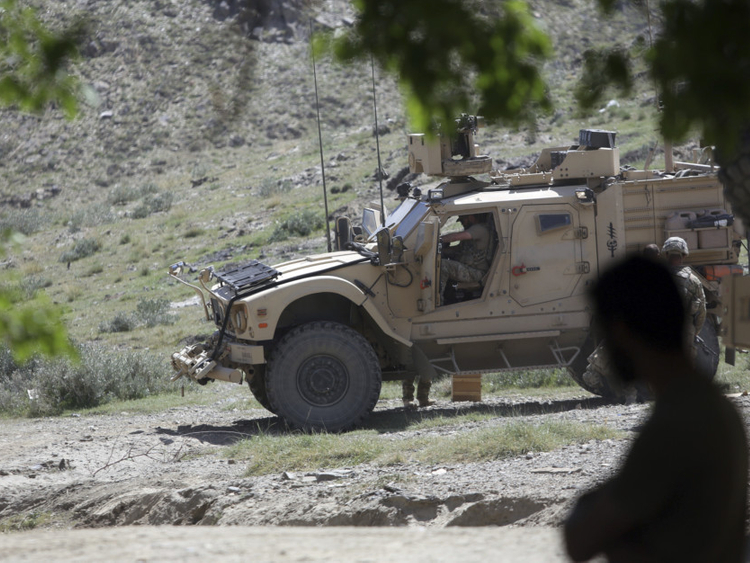A new Afghanistan war strategy approved last month by United States President Donald Trump’s top military and national security advisers would require at least 50,000 US forces to stop the advance of the Taliban and save the government in Kabul, according to a classified US intelligence community assessment.
US intelligence and national security officials familiar with the assessment tell me that it was drafted in April, and that it provided estimates of necessary troop strengths for various strategic options. It found that if an ambitious war plan approved by the National Security Council’s (NSC) Principals Committee got a green light from the president — a big if — more than 50,000 US troops would be needed. That proposed strategy would place the US on a new war footing and in a deeper partnership with the Afghan government in its current campaign against the Taliban. It would also remove arbitrary timelines for withdrawal set by former US president Barack Obama.
The new estimate from the intelligence community envisions significantly more US forces in Afghanistan than the current levels of around 8,400 US troops fighting there. It is also more than the modest troop increase for Afghanistan of around 5,000 that was reported week before last.
One reason the new war strategy would require more troops is that it envisions using US forces in a support role that until now has relied on outside contractors. Using contractors for functions like vehicle maintenance and other logistical aid have meant that US forces deployed to Syria and Iraq have largely focused on war fighting and training locals. This has kept the total number of US troops artificially low, while increasing the overall cost of the US presence.
Spokesmen for the Office of the Director of National Intelligence and the NSC declined to comment for this column, but other US officials familiar with the internal deliberations tell me that Trump has signalled he is in no mood to escalate America’s longest war. Indeed, he had complained to close aides in the last month about how great powers throughout history — from Alexander’s Macedonians to the British Empire — have failed to pacify the country.
Trump’s National Security Adviser, H.R. McMaster, takes a very different view. For the last five weeks, he has lobbied the National Security Cabinet and the president with a slide presentation on Afghanistan that features photos from Kabul in the 1970s, when it resembled a modern capital. That was before the Soviet coup of 1979, before the rise of the Mujahideen in the 1980s that drove the Soviets out, and before the rise of the Taliban in the 1990s and early 2000s that provided a safe haven to Al Qaida before the September 11 attacks. According to US officials familiar with McMaster’s presentation, the message was simple: Afghanistan is not necessarily destined to be a safe haven for terrorists or a wasteland run by warlords. What’s more, McMaster has argued strongly that the counter-terrorism mission against the Taliban and other insurgents is contingent on the government of President Ashraf Gani surviving.
On this last point, there are no guarantees. While the Taliban has not been able to control territory in major population centres, it has expanded its reach and influence since the end of US combat operations in the country in 2015. One US national security official described the current strategy inherited from Obama as “losing slowly”. This official said the Taliban will overrun the government eventually if more outside resources are not deployed.
Week before last, Lt. General Vincent Stewart, director of the Defence Intelligence Agency, said the current war between Gani’s government and the Taliban is a “stalemate”. He added: “That stalemate will deteriorate in the favour of the belligerents. So we have to do something very different than what we’ve been doing in the past.”
Jack Keane, a retired four-star US Army general who is an ally of McMaster’s, told me that a strategy to support Gani’s government is not only the best plan, but it also has a good chance of succeeding. “In survey after survey, for every year we have been doing this, the polling reflects overwhelmingly that 70 to 80 per cent of the Afghan people reject the Taliban,” he said. “Supporting a government that is attempting to meet the needs of its people, despite their inefficiencies and despite the level of corruption that is there, still makes the most sense.”
In the abstract, Keane is right. Yet, Trump has avoided making a commitment to heavy military involvement recommended by the NSC Principals Committee. Initially, McMaster had hoped to brief the president on a final strategy and get a decision in the first week of this month. The hope was that the president would be able to present the plan at the Nato summit in Brussels on May 25, so the allies would be asked to contribute to a cohesive strategy. White House officials later told me they didn’t expect there would be time on the president’s schedule last week for Afghanistan.
Obviously, Trump is a busy man. Between the president’s first foreign trip, the latest allegations that he inappropriately shared classified intelligence with Russia’s foreign minister and the aftermath of his chaotic firing of FBI director James Comey, the White House has to attend to many urgent matters. But with the spring fighting season getting into full swing in Afghanistan, the government in Kabul does not have the luxury of time.
— Bloomberg
Eli Lake is a Bloomberg View columnist.









